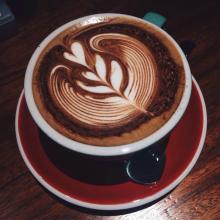Guatemala Antigua Flower God Coffee Flavor Variety Producing Area Fine Coffee Bean Characteristics Introduction
Each region of coffee beans have their own characteristics, but also for Guatemala won a lot of international praise, especially Antigua it sour, sweet, mellow texture is how perfect harmony; add a hint of smoke, more emphasis on its mystery, after tasting you will have reason not to let yourself look for alternatives everywhere.
Guatemala coffee beans are mostly cultivated in volcanic soils at high altitudes, belonging to the highest Arabica variety. Due to the long ripening period, the beans are medium and dense (Guatemala coffee beans are graded not by particle size, but by the number of defects), and the beans are dark turquoise in color. Aroma, mellow, sweet and fresh pleasant unique acidity is its characteristic, because the aroma and taste of coffee beans are hidden in its acidity. Therefore, coffee beans with this characteristic can be called superior coffee beans. Name Roasting Degree Taste Characteristics Few places in the world offer the variety of quality coffee beans produced in Guatemala. Guatemala coffee beans are excellent because of the unique conditions of their origin, including different climate changes in each region, rich volcanic soil, abundant natural water resources, high altitude mountains and shady and humid forests. On the menus of some high-end cafes, Guatemala Antigua coffee is definitely included in the "origin coffee" column. People who like it always think about its special smoke fragrance. Coffee created prosperity for Guatemala. Coffee continues to influence Guatemala's economy to this day.
Antigua is the oldest and most beautiful city in America. As early as 1543, Antigua was the colonial capital of Central America, and the Spanish government was also located here. After a major earthquake in 1773, Antigua was completely destroyed, so the capital was moved to Guatemala. Antigua City is about 40 kilometers west of Guatemala City. Colonial buildings were destroyed by the earthquake. After the earthquake, the original state was preserved as a whole. It can be said to be a living historical museum. Antigua coffee is grown in Antigua, on the slopes of the volcanic heartland, where it grows naturally in the rain and sun.
Antigua coffee dates back to the Mayan civilization. Due to volcanic eruptions, the soil here is more nutritious, and sufficient sunlight and moisture also make the coffee produced excellent quality. Most importantly, the residents here insist on growing Arabica bourbon coffee, although the yield is small, but the quality is better. Antigua's inhabitants, who grow coffee on a large scale, like to harvest it all at once and use the ancient sun method to remove the skin and pulp from the coffee fruit. People pluck ripe fruit and unripe fruit together, even mixing leaves with them and spreading them out in the sun. When spread on the ground for a long time, coffee beans easily absorb the impurities of the soil, so they often have an odd salty taste. The taste is often unbearable to first-time tasters, but people who are used to it like it. Coffee farmers in Antigua earn very little. But they themselves say that even if they are poor, they still feel happy because of coffee.

Important Notice :
前街咖啡 FrontStreet Coffee has moved to new addredd:
FrontStreet Coffee Address: 315,Donghua East Road,GuangZhou
Tel:020 38364473
- Prev

Introduction to the flavor description of fine coffee beans in Jinchu Coffee Variety producing area of Kenya
Don't underestimate the small farmers in Kenya, they are just like ants, and their overall production capacity is higher than that of large farms, about six to four, which is quite rare in bean-producing countries. Kenyan coffee is widely appreciated by connoisseurs, thanks in large part to small farmers guarding the foothills and producing high-quality coffee. In addition, Kenya beans must have a strict grading system, according to the size of the coffee beans taken out by the washing plant.
- Next

Introduction to the flavor description characteristics of high-quality coffee beans in Panamanian coffee producing areas
Species of Geisha were discovered in the Rose Summer Forest of Ethiopia in 1931 and sent to the Coffee Research Institute in Kenya, introduced to Uganda and Tanzania in 1936, introduced to Costa Rica in 1953, and Panama was introduced in the 1970s by Mr. Francico Serraxin of the Tonba Seven Farm Garden from CATIE in Costa Rica and began to grow Rose Summer Coffee. G
Related
- Detailed explanation of Jadeite planting Land in Panamanian Jadeite Manor introduction to the grading system of Jadeite competitive bidding, Red bid, Green bid and Rose Summer
- Story of Coffee planting in Brenka region of Costa Rica Stonehenge Manor anaerobic heavy honey treatment of flavor mouth
- What's on the barrel of Blue Mountain Coffee beans?
- Can American coffee also pull flowers? How to use hot American style to pull out a good-looking pattern?
- Can you make a cold extract with coffee beans? What is the right proportion for cold-extracted coffee formula?
- Indonesian PWN Gold Mandrine Coffee Origin Features Flavor How to Chong? Mandolin coffee is American.
- A brief introduction to the flavor characteristics of Brazilian yellow bourbon coffee beans
- What is the effect of different water quality on the flavor of cold-extracted coffee? What kind of water is best for brewing coffee?
- Why do you think of Rose Summer whenever you mention Panamanian coffee?
- Introduction to the characteristics of authentic blue mountain coffee bean producing areas? What is the CIB Coffee Authority in Jamaica?

